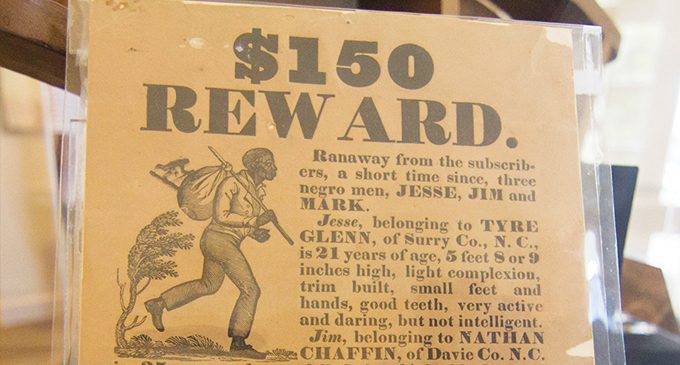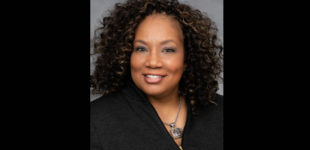Slaves and freemen lived in shadows of Salem

This is the second of a three-part series.
It is impossible to tell the story of Salem without including the narratives of enslaved blacks and freemen like Peter Oliver, Johann Samuel, Christian David and countless others.
From the time the first slave was purchased by Wachovia Moravians on Aug. 7, 1769, the black population lived, worked, and played in the same spaces occupied by their owners but in the shadows, going almost unnoticed in what has become known as Hidden Town.
When discussing the hidden history of the black population in Salem, it is important to note that during the late 18th century when the town of Salem was founded, it was unlike many others in the Southern United States. Salem was a theocracy, which means it was governed by the church. In the beginning all slaves in the town were owned by the Wachovia Administration, the governing body of all six communities in the area: Salem, Bethania, Bethabara, Hope, Friedberg and Friedland. During the Industrial Revolution, you will see how living arrangements of the enslaved set Salem apart from other towns and cities in the South as well.
Despite rules that prohibited the individual ownership of slaves, as the town continued to grow, the use of slave labor crept into the Moravian way of life. Throughout the majority of the 18th and early 19th centuries, renting slaves was suggested as an alternative to owning slaves. For example, records from the “Salem Diary” in “Records of the Moravians in North Carolina” show that in 1803 the owner of a tavern named Elrod requested the services of a slave to help out in the pub.
An excerpt reads, “… After a full discussion of the matter Council approved the suggestion to make an exception in this case, and gave Br. Elrod permission to bring him on condition that if he did not behave well he would send him away.”
As time moves on you will see that more and more exceptions like this one were made to help the growth and development of Salem, especially following the Revolutionary War. Around that time the idea of “American Freedom” began to settle on the town and the buying and selling of slaves became more widely accepted.
1800-1850
Exactly 32 years after he was purchased by the Wachovia Administration, Sam, who was given the name Johann Samuel after he was baptized in the Salem Gemeinhaus in 1771, was given his freedom by an act of state legislature and given the right to own farmland in Bethabara. According to Martha Hartley, director of research and outreach of Old Salem Inc.’s restoration division, this was an unusual circumstance.
She said Johann Samuel’s wife, Maria, was purchased from a man in Virginia in 1778. Because she was a mulatto, Virginia law stated she was to be freed at age 31. She and Johann Samuel married in 1780, lived in Bethabara, and had several children. Maria became free on July 1, 1795, and five years later, Samuel and the children were freed as well.
A year later, Peter Oliver, who is still well known for his pottery skills today, became one of the first slaves to purchase his freedom. Cheryl Harry, Old Salem’s director of African-American programing, said Oliver is one of many examples of slaves who played major roles in the town. In today’s time, Oliver would be considered “self-made” by the younger generation. A few years after buying his freedom, Oliver purchased land near Holland’s plantation just north of Salem. He supported his wife, Christina Bass, and their six children by becoming one of the best-known potters of his time.
While slave regulations banning the ownership of individual slave ownership were still in place, the 1810 Federal Census indicated that at least 20 slaves were owned by people in Salem.
In 1815 Frederick Schumann moved to Salem from nearby Bethania to become the town’s doctor. Schumann only agreed to move to Salem if he was allowed bring his slave Coelia and her four children. Around this time segregation had become popular. A compromise was reached where Schumann had to live across Salem Creek. Segregation continued from there. In 1822, the African Church in Salem, the first Black Moravian congregation, was started.
The establishment of the woolen mill in 1840 ignited a period of transformation in Salem. The transition from a trade-based economy to an industrial-based economy increased the need for labor, which increased the black population in Salem.
The 1840 Federal Census for Stokes County recorded 50 enslaved people in Salem and by 1847 the regulations that prohibited the ownership of individual slaves were a thing of the past. Forsyth County was formed two years later and Hidden Town started to take shape.
1850-1900
Change continued in Salem in the mid-1850s when the theocracy government ended in 1856. The Federal Census of Forsyth County in 1860 showed 160 slaves in Salem and 40 slave houses. F&H Fries, who is believed to have owned the mill at the time, owned 48 slaves and five slave houses of his own.
Old Salem Inc. CEO Franklin Vagnone said the urban style of living, and the development of the woolen mill not only increased the black population in Salem but it also changed the living arrangements for many slaves. Much different from other towns in the South, like rural areas of Georgia or Alabama who practiced plantation slavery, many of the enslaved in Salem lived in tenement houses or in the same houses as their masters.
When discussing the differences between plantation slavery and the urban style of slavery practiced in Salem, Vagnone said, “You’re looking at a system in Salem which is not plantation. It’s more of a form of living fully integrated with the white slave-owning population. That produces a very different kind of society.”
On Sunday, May 21, 1865, in the pulpit of St. Phillips African Moravian Church, a Union Calvary officer announced the end of slavery. Newly freed slaves were still prohibited from buying land in the town of Salem. They were limited to the property just across Salem Creek, the same land that Fredrick Schumann and his slaves were forced to move to in 1815. Today that area is known as Liberia or Happy Hill.
Despite the imposition of Jim Crow laws in the 1870s and the growth of Happy Hill, Hidden Town remained intact in Salem. An 1879/1880 directory of Salem listed 72 black males and 67 females. The directory shows slaves continued to live in slave houses in the town. It also shows that a slave, Anderson Smith, lived inside the Salem Hotel on Main Street. Smith was one of the few slaves who lived on Main Street.
Looking toward the future
At the start of the 20th century, the black population of Winston and Salem accounted for about 40 percent of the total population. In 1913, Winston and Salem consolidated and in 1920, with the continued growth of the population, the town reached its financial height and blacks began to prosper. Living in the new city of Winston-Salem were black attorneys, physicians, dentists, barbers, and even restaurant owners. With a population of 48,395, Winston-Salem was the largest city in the state.
Over the next 25 years, the black population continued to grow in the area, but if you look at a map of the area of Salem during that time, you won’t see many people of color as East Winston starts to come into play as a new vibrant black community.
Next week in the Hidden Town series, we will take a closer look at the two growing communities of Happy Hill, or Liberia, and East Winston. Although Hidden Town was forgotten by this time, these two communities were built on the backs of those who lived in the shadows of Hidden Town. We will also look toward the future and discuss how this narrative will continue to grow as time moves on, and people begin to connect their genetic roots to the places and spaces of Old Salem.
If anyone has any information, pictures, stories, or ideas to add to the Hidden Town Project, contact the committee by email at hiddentown@oldsalem.org.











